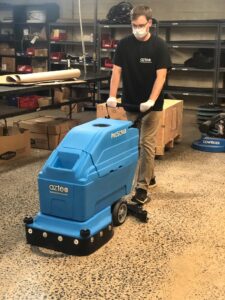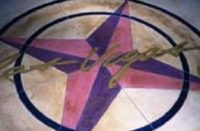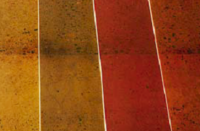
Before using an auto-scrubber to clean a polished concrete floor, make sure everything that will touch the surface is clean. This includes tires, brushes, pads, squeegees, your shoes and an empty dirty water tank.
Completely fill the clean water tank, noting how many gallons it holds. Add your choice of polished concrete-specific cleaner per the manufacturer’s recommended dosage.
NOTE: Most of the time, using more than the recommended amount of cleaner isn’t better. It can leave residue behind that can inhibit shine, cause hazing and attract new dirt.
Set the auto-scrubber speed so you can comfortably watch the floor as it’s being cleaned and it’s safe for all around.
To begin, set the water flow on medium. Adjust as you clean so all the water is caught and removed with the squeegee/vacuum as you move forward.
Maintaining a water puddle between the brushes and the squeegee is vital or the dirt won’t float to the top and be removed.
NOTE: You must be moving if the brushes are. But if you walk too fast, the floor may get wet, but it won’t get clean.
When the dirty water tank is emptied and the water is cloudy-clear, the floor is clean!
As a follow-up, someone asked:
Why use brushes instead of pads?
Polished concrete is a unique flooring. Although it’s ground and polished smooth, the surface still has random voids and imperfections. This makes getting it clean more technically challenging.
When using pads, the pad web scrubs the smooth surface and the residue releases and gets trapped between the web fibers. As the pads continue to spin and the water continues to flow, the water carries the soluble particles through the pad and the trapped material is pressed down into the next void encountered.
This results in only the solubilized debris with particles small enough to find their way through the pad web can float in the cleaner mixture and be removed by the vacuum’s suction.
When using brushes, the bristles both scrub the smooth surface and poke down into the voids to dislodge foreign substances. The released residue flows between the bristles, as the brushes continue to spin. As the water flows, it carries the debris through the bristles, enabling it to float in the cleaner and be removed by the vacuum’s suction.
The bristles’ composition and stiffness are also very important. Poly or nylon brushes with medium to medium-soft stiff bristles do the job best,
Have more questions or a suggestion for polished concrete topics? Feel free to contact Jennifer Faller at [email protected].












